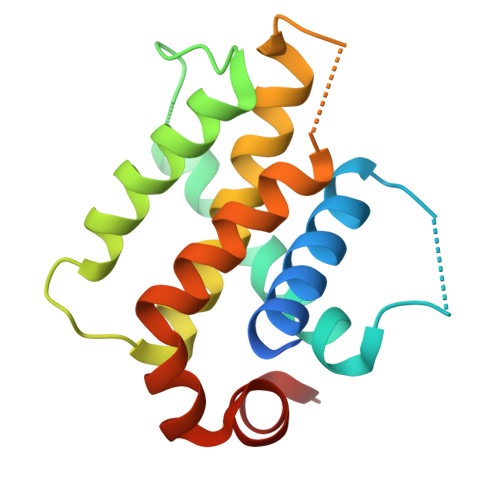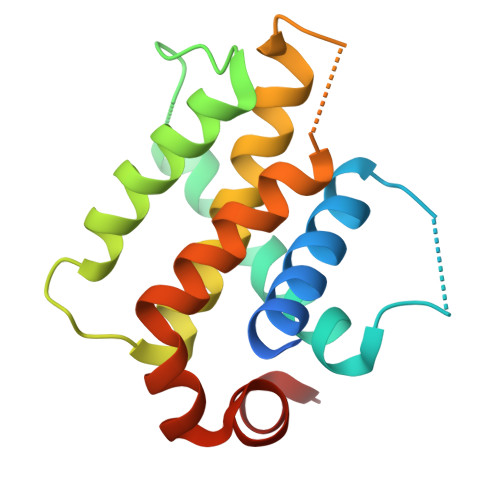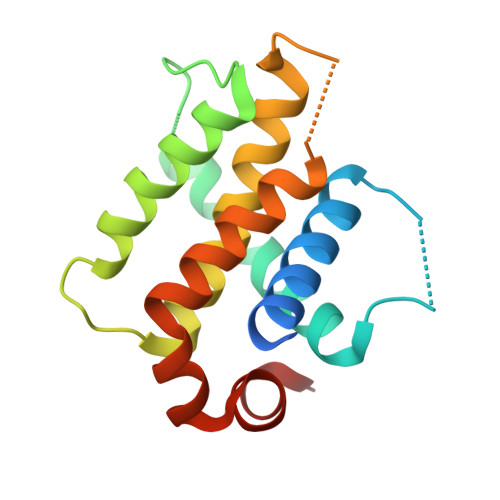Identification of a Covalent Molecular Inhibitor of Anti-apoptotic BFL-1 by Disulfide Tethering.
Harvey, E.P., Hauseman, Z.J., Cohen, D.T., Rettenmaier, T.J., Lee, S., Huhn, A.J., Wales, T.E., Seo, H.S., Luccarelli, J., Newman, C.E., Guerra, R.M., Bird, G.H., Dhe-Paganon, S., Engen, J.R., Wells, J.A., Walensky, L.D.(2020) Cell Chem Biol 27: 647
- PubMed: 32413285
- DOI: https://doi.org/10.1016/j.chembiol.2020.04.004
- Primary Citation of Related Structures:
6VO4 - PubMed Abstract:
The BCL-2 family is composed of anti- and pro-apoptotic members that respectively protect or disrupt mitochondrial integrity. Anti-apoptotic overexpression can promote oncogenesis by trapping the BCL-2 homology 3 (BH3) "killer domains" of pro-apoptotic proteins in a surface groove, blocking apoptosis. Groove inhibitors, such as the relatively large BCL-2 drug venetoclax (868 Da), have emerged as cancer therapies. BFL-1 remains an undrugged oncogenic protein and can cause venetoclax resistance. Having identified a unique C55 residue in the BFL-1 groove, we performed a disulfide tethering screen to determine if C55 reactivity could enable smaller molecules to block BFL-1's BH3-binding functionality. We found that a disulfide-bearing N-acetyltryptophan analog (304 Da adduct) effectively targeted BFL-1 C55 and reversed BFL-1-mediated suppression of mitochondrial apoptosis. Structural analyses implicated the conserved leucine-binding pocket of BFL-1 as the interaction site, resulting in conformational remodeling. Thus, therapeutic targeting of BFL-1 may be achievable through the design of small, cysteine-reactive drugs.
Organizational Affiliation:
Department of Pediatric Oncology, Dana-Farber Cancer Institute, 450 Brookline Avenue, Boston, MA 02215, USA; Linde Program in Cancer Chemical Biology, Dana-Farber Cancer Institute, 450 Brookline Avenue, Boston, MA 02215, USA.















